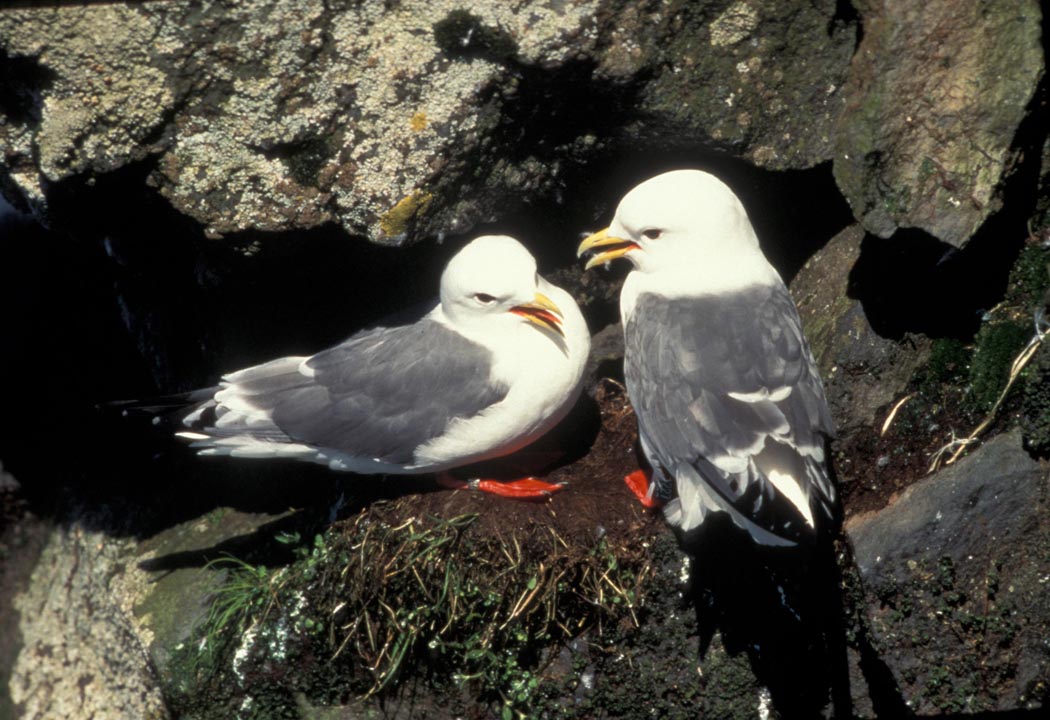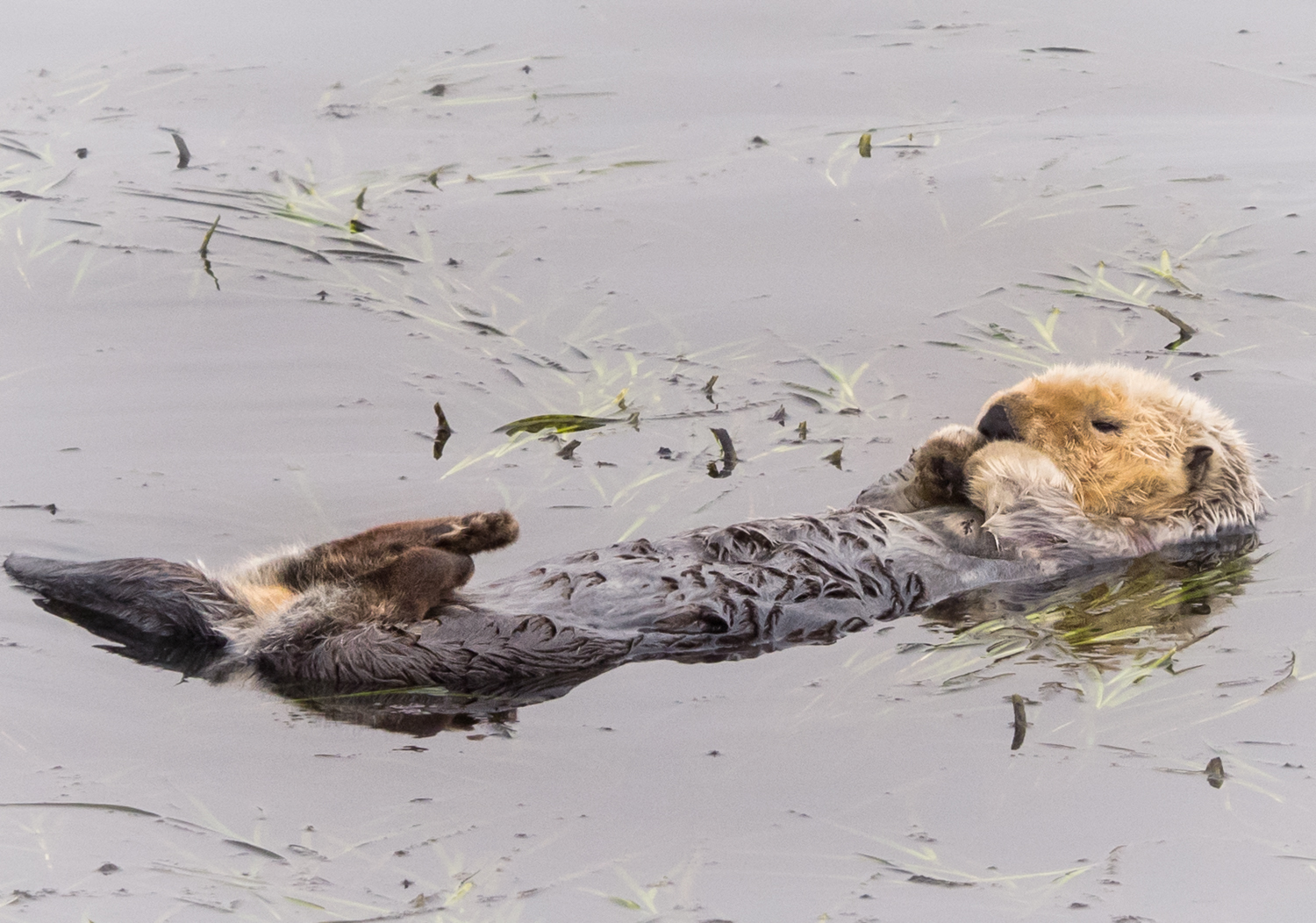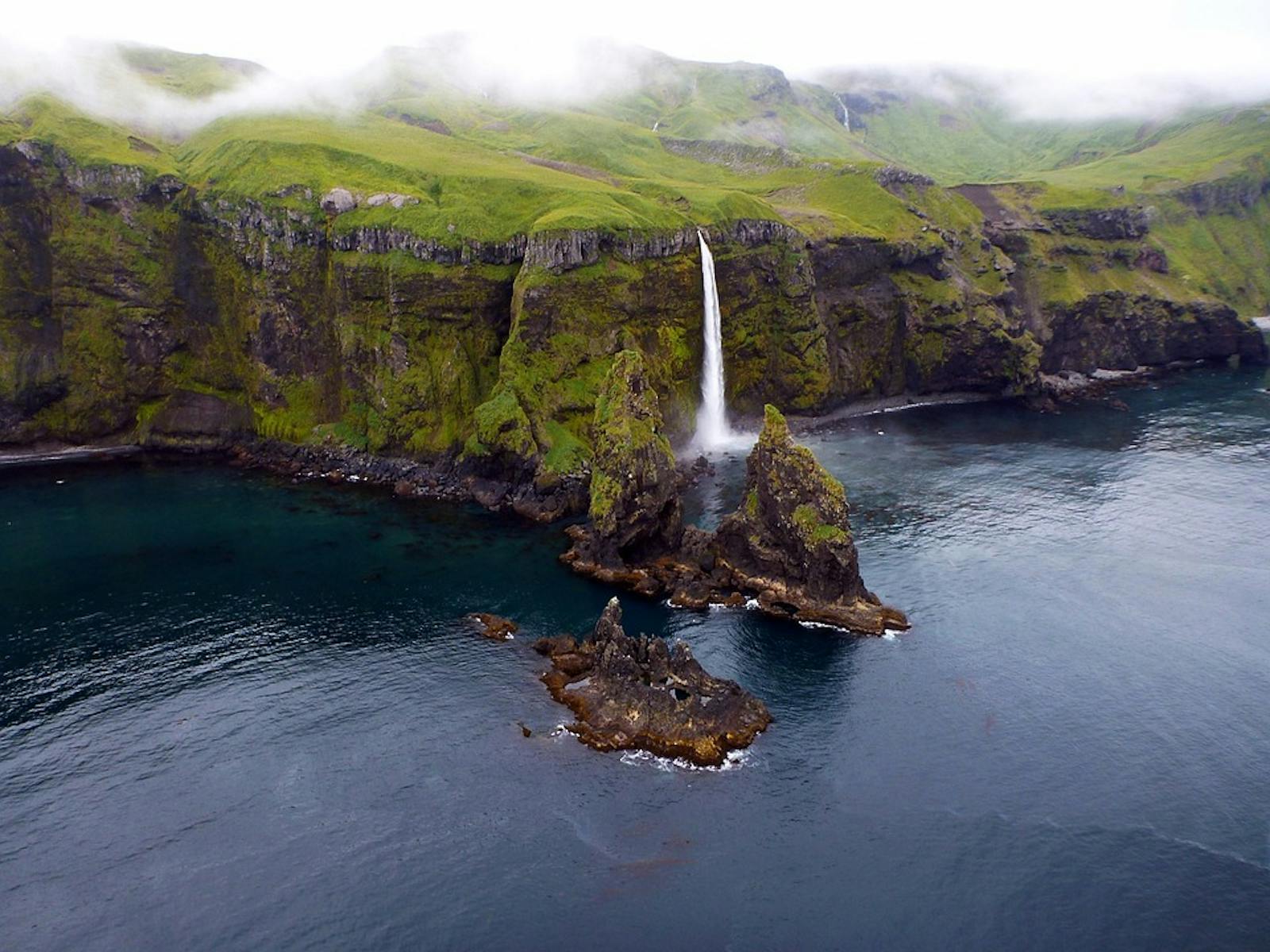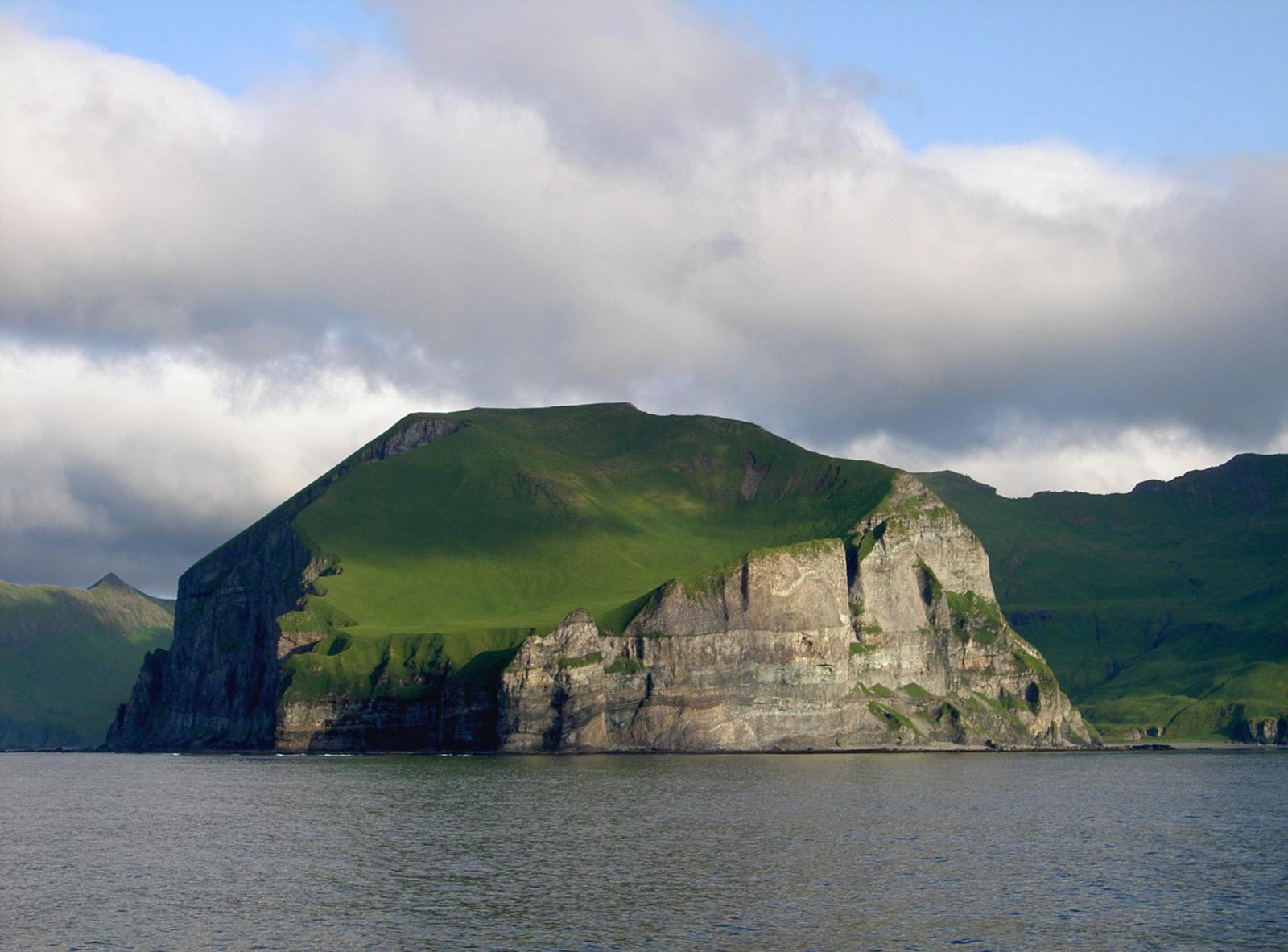Aleutian Islands Tundra
The ecoregion’s land area is provided in units of 1,000 hectares. The protection goal is the Global Safety Net (GSN1) area for the given ecoregion. The protection level indicates the percentage of the GSN goal that is currently protected on a scale of 0-10.
Bioregion: Greater Alaska Taiga & Tundra (NA4)
Realm: Subarctic America
Ecoregion Size (1000 ha):
1,226
Ecoregion ID:
406
Conservation Target:
98%
Protection Level:
10
States: United States: AK
The Aleutian Islands Tundra ecoregion encompasses the 1,500-km Aleutian chain, which stretches between the Alaska Peninsula and Kamchatka Peninsula in Russia, as well as the Pribilof Islands, which lie 320 km north of Unalaska Island in the Aleutians. The Aleutians include 14 large volcanic-sedimentary islands and 55 smaller islands, a few of which belong to Russia, and form the dividing line between North Pacific Ocean (Gulf of Alaska) to the south and the Bering Sea to the north. The islands range from sea level to greater than 1,900 m in elevation.
Some 98% of this ecoregion is protected, mostly within the Alaska Maritime National Wildlife Refuge. This 20,000 km2 refuge includes area on the Alaska Peninsula as well as in the Aleutians and provides breeding habitat for an estimated 40 million seabirds, some 80% of all seabirds that nest in North America.
The climate of this ecoregion is maritime, with about the same winter temperatures as Southeast Alaska (e.g., around Sitka) but much cooler in summer. Average daily low temperatures in winter range from -7oC to -2oC, with winter high temperatures averaging 2oC to 5oC. Average summer temperatures have lows of around 4oC and highs of 10oC to 13oC. Average annual precipitation ranges from 530 mm to 2,080 mm at sea level weather stations.
The vegetation at high elevations and exposed sites consists of dwarf scrub dominated by crowberry or willows. Other plants include mountain-cranberry, bog and dwarf blueberry, mountain avens, cassiope, narrow-leaf Labrador-tea, Aleutian mountain-heath, sedges, lichens, and mosses. At lower elevations and on more protected sites, communities of grasses and sedges predominate. Moist sites are essentially meadows with bluejoint grass and various forbs (broad-leaved herbaceous plants). Dry sites are dominated by hair-grasses. Low scrub bogs are dominated by a variety of plants in the heath family, as well as sedges, sphagnum moss, and feathermosses.

The flagship species of the Aleutian Islands Tundra ecoregion is the red-legged kittiwake. Image credit: Creative Commons
This ecoregion is particularly important for its birdlife. Some of the birds are regional endemics, breeding and nesting only in this core Bering Sea-North Pacific area; these species include whiskered auklet, crested auklet, least auklet, Aleutian tern, red-faced cormorant, and red-legged kittiwake.i More than 75% of the known population of red-legged kittiwakes breeds on St. George Island in the Pribilof Islands.ii
A large proportion of the populations of several other bird species, including fork-tailed storm-petrel, tufted puffin, and horned puffin, nest within this ecoregion. More than 90 Asian bird species have been recorded in the Aleutians, especially in the islands from Adak to Attu. These species include several seen nowhere else in North America: yellow bittern, Chinese egret, lesser white-fronted goose, great spotted woodpecker, narcissus flycatcher, Siberian blue robin, lanceolated warbler, and Eurasian siskin.i
Marine mammals of this ecoregion include northern fur seal, the endangered Steller sea lion, harbor seal, Pacific walrus, sea otter, and various whales. No native land mammals occur on most of the Aleutians. However, strong swimmers such as bears and river otters occasionally visit the islands closest to the mainland. Due to the isolation of the islands, several endemic species have evolved here, including the Unalaska collared lemming and the St. Paul-Pribilof shrew.

Sea otter. Image credit: Ingrid Taylar, Creative Commons
At least seven endemic plant species occur in the Western Aleutian Islands: Aleutian saxifrage, Aleutian wormwood, Aleutian chickweed, Aleutian mountainheath, Aleutian bellflower, Aleutian holly fern, and Aleutian draba.
Although well-protected and seemingly pristine, the Aleutian Islands have been damaged by military activities, radiation from nuclear testing on Amchitka Island in 1971, changes to the food web due to over-fishing, and most importantly, introduction of exotic species, including cattle, reindeer, Arctic fox, and rats. The latter prey on eggs and nestlings of seabirds.
Priority conservation actions for the next decade are: 1) maintain the integrity of protected areas by restricting incompatible uses; 2) control or eradicate introduced species; and 3) protect vulnerable species from over-harvest and monitor populations.
Citations
1. Ricketts, T.H. et al. 1999. Terrestrial Ecoregions of North America: A Conservation Assessment. Island Press, Washington, D.C.
2. Gallant, A.L., E.F. Binnian, J.M. Omernik, and M.B. Shasby.1995. Ecoregions of Alaska. USGS Professional Paper 1567. U.S. Govt. Printing Office, Washington, D.C.
3. Aleutian Islands. https://en.wikipedia.org/wiki/Aleutian_Islands




